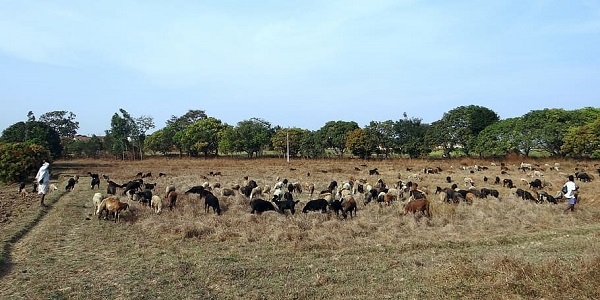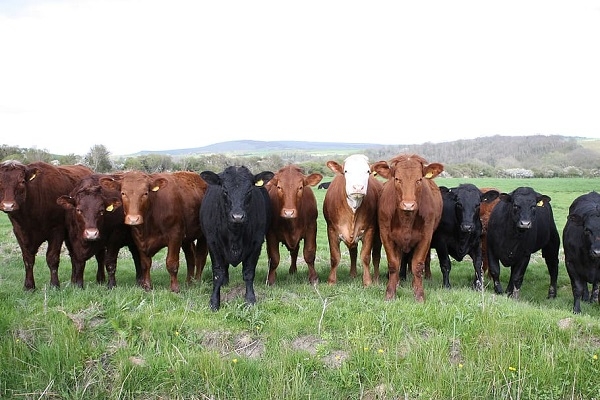Is Animal Cruelties in Increase? The Real Efforts for It’s Prevention
Total Views |
India is home to several religious and traditions, advocating non-violence and compassion towards animals. The Indian philosophy of the coexistence on the earth is the concept of “kindness and compassion” to all the creature survives on the earth. There was a time, the Indian philosophy of Daya and Dharma was a script of human behavior which has been now changed and scientifically proved to secure the survival all living creatures exist on earth. In the current scenario , the importance of Daya and Dharma have to be translated into far and wide prospective because , due to shift of paradigm , the terminology Animal Welfare is deeply involved with ethics, ecology and economics , the base of our development and system is called “sustainable development”. It is therefore, saving animals and protecting and preventing them from cruelties , is utmost important responsibility of human beings to save the nature.

GENESIS OF ANIMAL WELFARE MOVEMENT:
1) Pre-independence:
India is not just a geographical unit, India is a historical continuity. Indian philosophy is holistic in its content integrating Man, Animal and Nature. The concept of "Vasudhaiva Kutumbakam"(Universal Co-existence), per Vada's the mindset of Indians. In the Indian ethos, Plant life and Animal life are seen as integral to man's existence. Ahimsa or Non- violence is the recurring theme in our cultural panorama. Our Ancient text's record that the hermitage of Seers or Rishis (Holy Men) was open to all who sought refuge, be it man or any orphaned Animal. The treatment was even to all beings.
Even today in our village customs, the farmer and his family feed the ants, crows, dogs and cattle before they take their food. This stems from a principle of bio-ethics (respect for other life forms).It was around 300 B.C. that Emperor Ashoka (often referred to as Ashoka the Great) built the first historically recorded veterinary clinic. Furthermore, he imposed a tax meant for treatment of Animals, and ordered for setting up of veterinary clinic along travel routes. Animal welfare was thus, an activity of the State, this noble deed initiated by the Mauryan Emperor, was also followed by many others, so much . So that it led to several public institutions were set-up alongwith Gaushalas , Gosadans and Panjarapoles. (Cow shelters) to take care of cows and its progenies.
Indeed, these Gaushalas, Gausadans and Panjarapoles were established for the protection of cattle wealth during natural calamities like flood and famine and also for providing shelter to old, sick, injured and disabled animals particularly those are abandoned and neglected. It was a recognition of the significant role of cattle in the country's economy. This is the juncture, where the cow and ox, therefore gave birth to the highly producing animals by manipulation and scientific innovation and the “Holy Cow” changed into "Cash Cow". Then, the animals exploitation is started and the same formula implemented for other animals like dog, cats ,monkeys and others and even , exploitation of the animal gone to the wild animals and birds.
2) Post independence:
In 1954, a historic private bill was introduced in the parliament by the first female parliamentarian animal lover and renowned classical dancer, Smt. Rukmini Devi Arundale to replace the existing Prevention of Cruelty to Animals Act, 1890 into modified one. Later on, withdrawn the private bill and the government bill was put up before parliament and passed unanimously. Thus, the Prevention of Cruelty to Animals Act, 1960 began new era to eliminate animal cruelties inflicted upon them on the day- to-day basis. As per provision of this Act, the Animal Welfare Board of India (AWBI) was set up in 1962 and campaigns against animal cruelties to maintain the animal kindness and compassion is begin.
During last two decades , the animal welfare projects and policies have been given highest priority in terms of proper awareness and education, formulation and implementation of several animal laws ,establishment of National Institute of Animal Welfare(NIAW) in 2002,setting up CPCSEA as a powerful and independent committee and expansion of Animal Welfare Division(AWD) in 2012 by appointing offices up to level of Joint/ Additional Secretary to lookafter issues of animal cruelties / welfare to bring the subject more update and advance to make more systematic , academic and scientific line of action plan so that the animal production and protection system could be maintained on ethical , emotional, sentimental and sustainable ground to face the challenges of environment and climate change without affecting the food chain and natural phenomenon of ecosystem.

During the period, the Animal Welfare Board of India achieved various milestones and landmarks in the field of animal welfare. The Government of India notified more than 10 rules and issued hundreds of advisories on various issues for preventing of animal cruelties and offering the measures of the animal welfare. Many centrally sponsored schemes on animal welfare were started to tackle the animal population management on scientific manner, facilities for sheltering, animal’s clinic facilities and also for efficiency for facing the challenge of natural calamities and emergency care of animals,if found in distress particularly, if the animals are struggling for life and death.
CURRENT STATUS AND CHALLENGES:
The current scenario of the animal welfare moment it is quite challenging. The Animal Welfare Board of India struggling to prevent and control the animal cruelties reported on the date- today basis throughout country, particularly in the urban area due to lack of proper cooperation , coordination and association with local bodies/ agencies and State governments . More than five decades over of the establishment of the National Animal Cruelty Prevention Network(NACPN) , the dream for the establishment and functioning of State Animal Welfare Board(SAWB) and District SPCA(DSPCA) not yet fulfilled . The use of animals are increasing day by day and animal husbandry practices are turning into factory farming/ or extensive farming. The animals are treated as a factory and machine to produce animal products to get as much as possible. Such practices of animal farming is a serious violation of animal ethics and humane values .Animal products also gets badly affected which have been unfit for human consumption. The environmental and climatic change has also created big problem for the animal care, management and animal health protection system. Today, zoonotic diseases are a new danger of human beings as well as for getting maximum production , the extensive use of antibiotics and hormones or growth promoters are becoming serious threat of their human life. The animal health experts are a too much worry about the outbreak of new diseases (viruses) and fear of “super-bugs”.
Only Alternatives: There is a very simple formula for maintaining of an advance animal production, the Animal Welfare Measures (Five Freedom) to be maintained, and then, animal production will not only be enhanced but high production will also be obtained. For ensuring all these steps, the policies of the Government of India related to Animal production and Animal Welfare have to be considered together as per recommendations of the World Health Organizations (WHO),"One Health Approach” for safe, secure and sustainable through suitable policies for animal production and animal welfare. For the successful programmes on Prevention of Animal cruelties , networking of the District SPCA(DSPCA) , functioning of State Animal Welfare Board(SAWB), encouraging Animal Science and Veterinary Universities to start Research and Educational Programs on Animal Welfare, allocation of the Sufficient Animal Welfare Budget and Synergy between State and Center have to be prioritized by the government

